
Oriental sweetlips Stock Image C010/9877 Science Photo Library
Oriental sweetlips, also known as Indian ocean oriental sweetlips, oriental blubberlips are marine ray-finned fish, which belongs to the family of the oriental fish species. It is scientifically known as plectorhinchus vittatus or plectorhinchus orientalis. It is a colorfully distributed fish that is mostly found in the Indian ocean and Western.

Oriental Sweet Lips Oklahoma Aquarium, Sweet Lips, Salt And Water
Description. Oriental Sweetlips are stunning fish when juvenile and mature into a large and still attractive adult. When young the Oriental Sweetlips is brown in color with various white splotches on its body. As it matures the Oriental Sweetlips has a white body with long horizontal black stripes. Its fins are yellow with black spots.

Oriental Sweetlips Facts and Photographs Seaunseen
They feed on benthic crustaceans, fish, and invertebrates. Juveniles found singly close to shelter, over clear water, shallow protected lagoons. Length - 70cm. Depth - 2-30m. Widespread Indo-West Pacific. In some areas of the world 'Grunts' are better known as 'Sweetlips' distinguished from other species by their very large rubbery lips.

Oriental Sweetlips Facts and Photographs Seaunseen
1,847 likes, 20 comments - aliageel1 on January 3, 2024: "Exploring the ocean's art gallery with these stunning Oriental sweetlips. Nature's masterpiec." Ali Ageel on Instagram: "Exploring the ocean's art gallery with these stunning Oriental sweetlips.
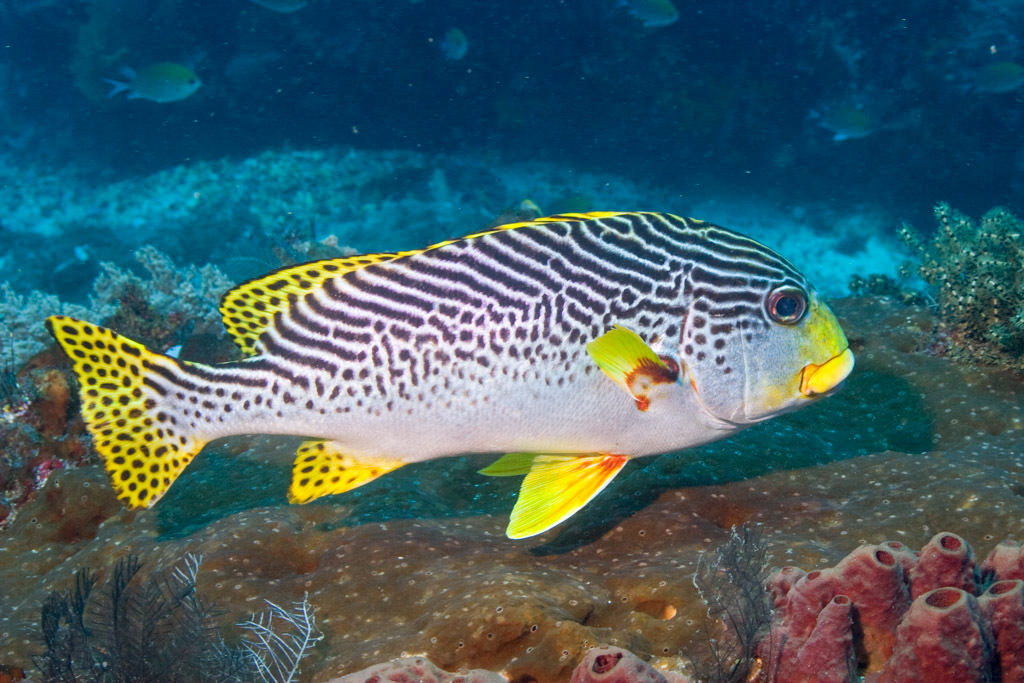
Snapper Oriental Sweetlips
T he oriental sweetlips Plectorhinchus vittatus, also known as the Indian Ocean oriental sweetlips , is a species of grunt. Closely related to the snappers, grunts have smaller mouths and teeth and thicker fleshy lips hence the name sweetlips.. They may also grind their teeth together when caught, emitting a grunting sound, hence the name grunt. The oriental sweetlips is a common fish on the.
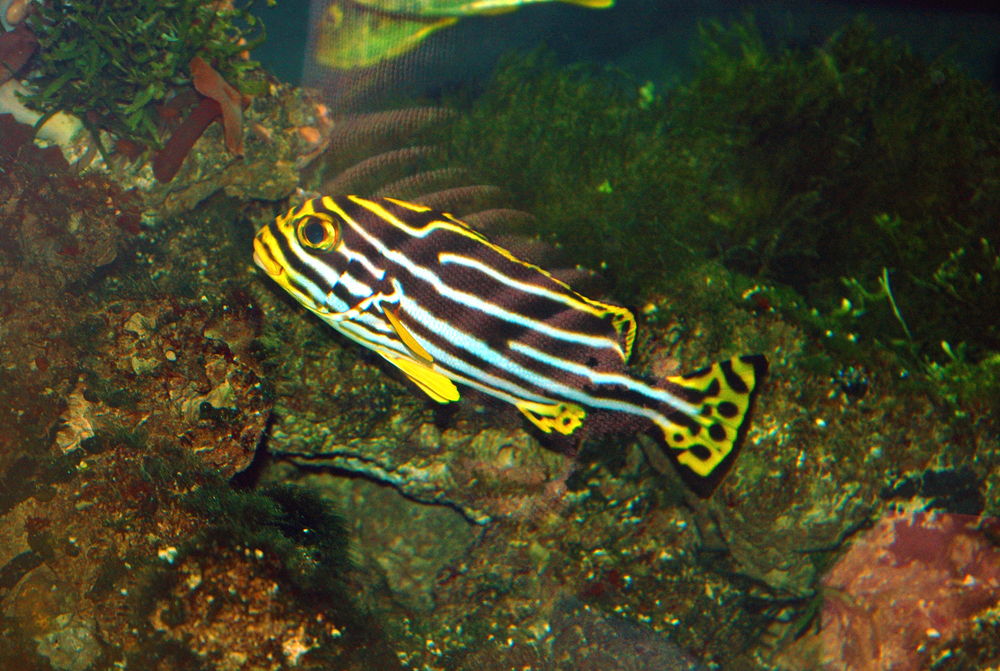
Snapper Oriental Sweetlips
native. Poissons récifaux de La Réunion. View. The Indian Ocean oriental sweetlips, Plectorhinchus vittatus, is a species of grunt native to the Indian Ocean and the western Pacific Ocean. This species can be found on both coral and rock reefs at depths from 2 to 25 m (6.6 to 82.0 ft).
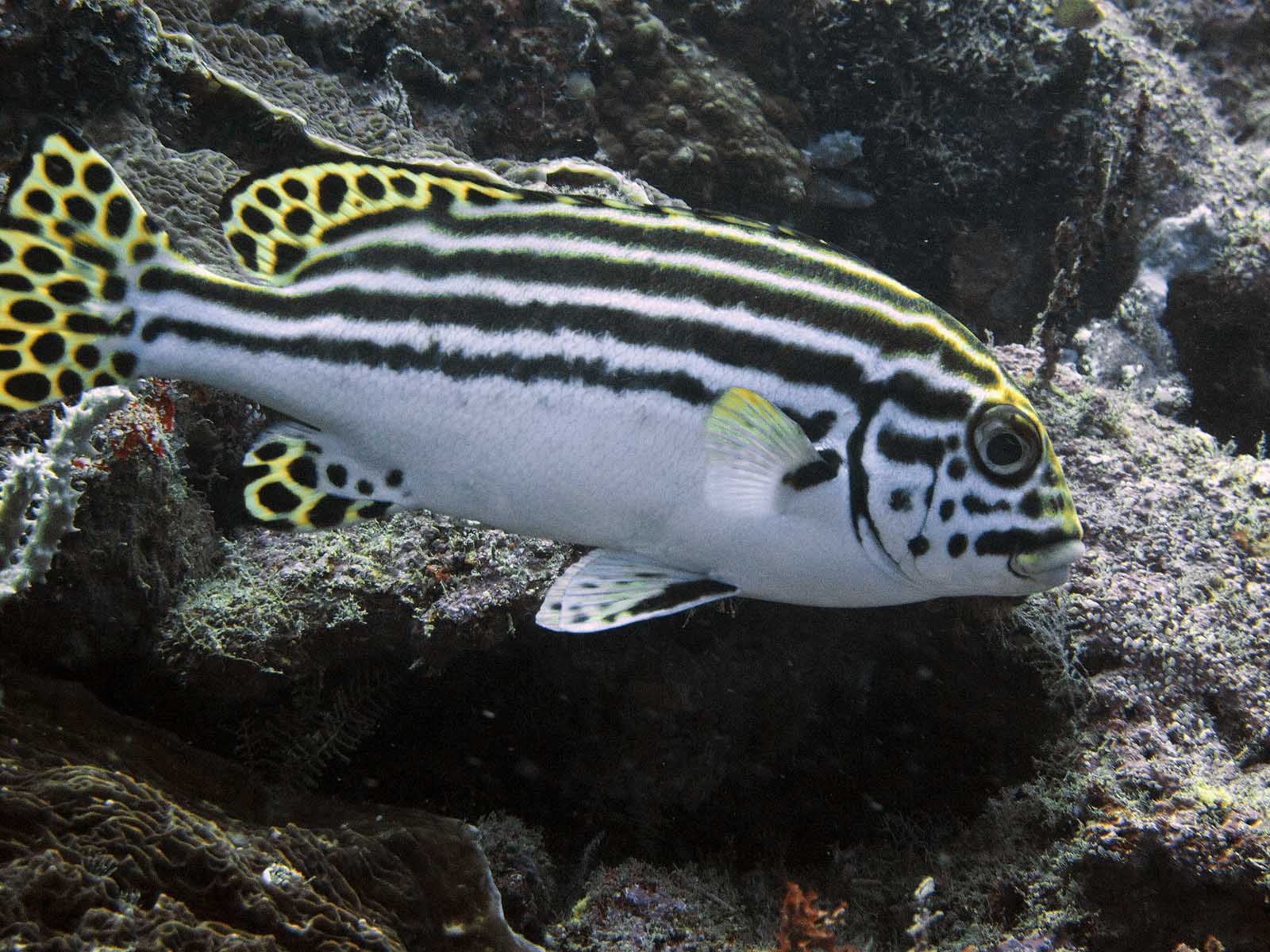
oriental sweetlips Madang Ples Bilong Mi
Oriental Sweetlips. The Oriental Sweetlips are found in the tropical waters of the Indo-Pacific region ranging from East Africa to the Western Coast of Australia. As Juveniles they will spend time in tidepools and areas populated with sea grass as adults they will venture out into the shallow coastal reefs not much deeper than 25m.

Oriental Sweetlips Facts and Photographs Seaunseen
They are predatory fish and mostly live off benthic crustaceans, worms and fish. There can be a big difference in appearance when the fish is young and fully grown. This family can divided into two groups: Plectorhinchinae (Sweetlips) and Haemulinae (Grunts). Aquarists normally find Sweetlips to be the best looking, but they can be difficult to.

Oriental Sweetlips Facts and Photographs Seaunseen
The Indian Ocean oriental sweetlips , also known as the oriental sweetlips or oriental blubberlips, is a species of marine ray-finned fish, a sweetlips belonging to the subfamily Plectorhinchinae, one of two subfamilies in the family Haemulidae, the grunts. It is native to the Indian Ocean and the western Pacific Ocean.

Photos of grunts and sweetlips, Haemulidae
They feed on benthic crustaceans, fish, and invertebrates. Juveniles found singly, close to shelter, over clear water shallow protected lagoons. Length - 70cm. Depth - 2-30m. Widespread Indo-West Pacific. In some areas of the world 'Grunts' are better known as 'Sweetlips' distinguished from other species by their very large rubbery lips.

Indian Ocean oriental sweetlips (Plectorhinchus vittatus)
The Oriental sweetlips fish of the Maldives, also known as the Clown sweetlips, is an incredibly special fish that can only be found in the warm waterways of the Maldivian islands. Natives to this region have long admired this striking creature for its vibrant mix of colours, which range from bright yellow to dark brown, and its amusing behaviour.

Oriental sweetlips Stock Image C010/9876 Science Photo Library
The Indian Ocean oriental sweetlips inhabits shallow, coastal coral reefs, lagoons and seaward reefs at depths of 2 to 25 m (6 ft 7 in to 82 ft 0 in). It is found singly or in small aggregations and is tends to be nocturnal. The juveniles may be found in tidepools and in beds of sea grass. [1] It forages at night feeding on small invertebrates.
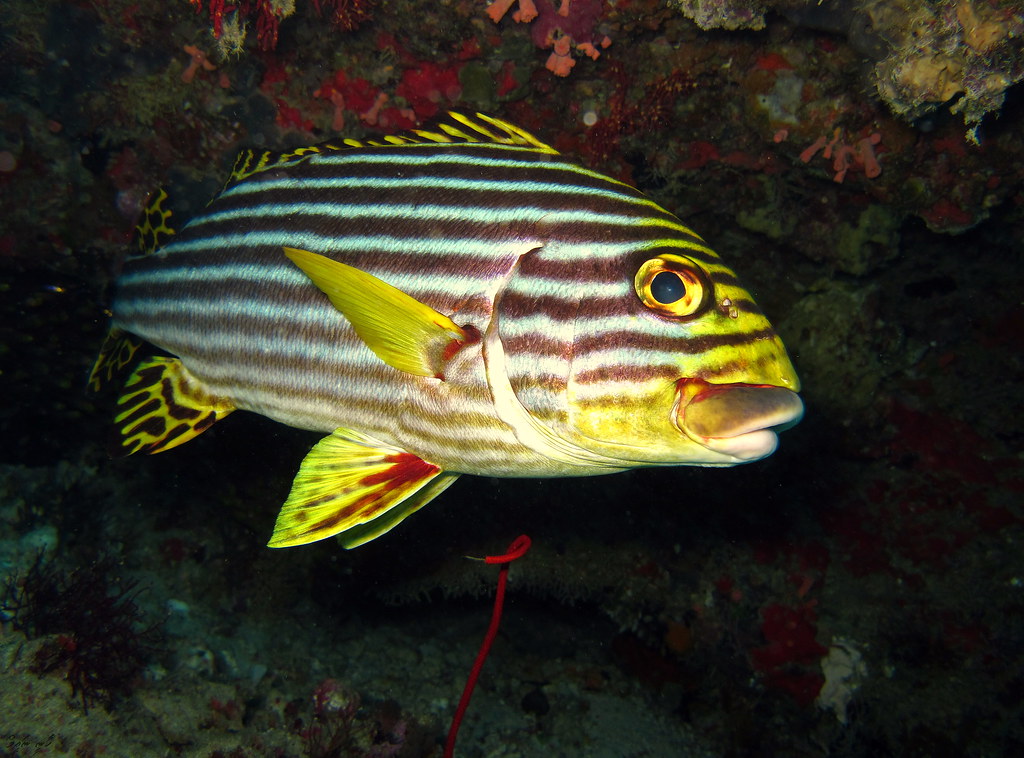
Oriental Sweetlips The Oriental Sweetlips (Plectorhinchus … Flickr
The Oriental Sweetlips Fish (Plectorhinchus Orientalis), has an incredibly beautiful body pattern and coloration that resembles a mosaic of whites, browns, and yellows. As an adult, the Oriental Sweetlips Fish's body turns more white with thin, black horizontal striping across its body. Fins become yellow with black spotting.
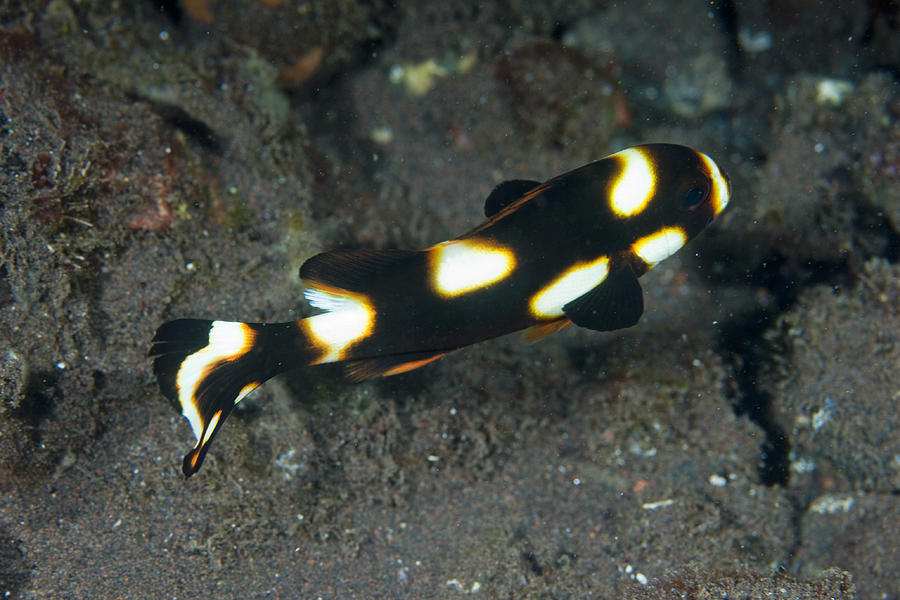
Juvenile Oriental Sweetlips Fish Photograph by Matthew Oldfield
Oriental Sweetlips, Plectorhinchus orientalis, is a species of grunt native to the Indian Ocean and the western Pacific Ocean. This species can be found on both coral and rock reefs at depths from 2 to 25 m.Juveniles are striped black. As they age, the stripes in the tail are replaced by black dots on a yellow background.

Oriental Sweetlips Facts and Photographs Seaunseen
Oriental Sweetlips. Also known by the common names of Indian Ocean Oriental Sweetlips, Oriental Blubberlips, Oriental Dogfish, Oriental Grunt, Oriental Sweetlip, Oriental Thicklip, Sweetlips, Yellow-banded Sweetlip, the Oriental Sweetlips is a colourful reef fish found in the Indian Ocean and other areas of the Indo-Pcific region.
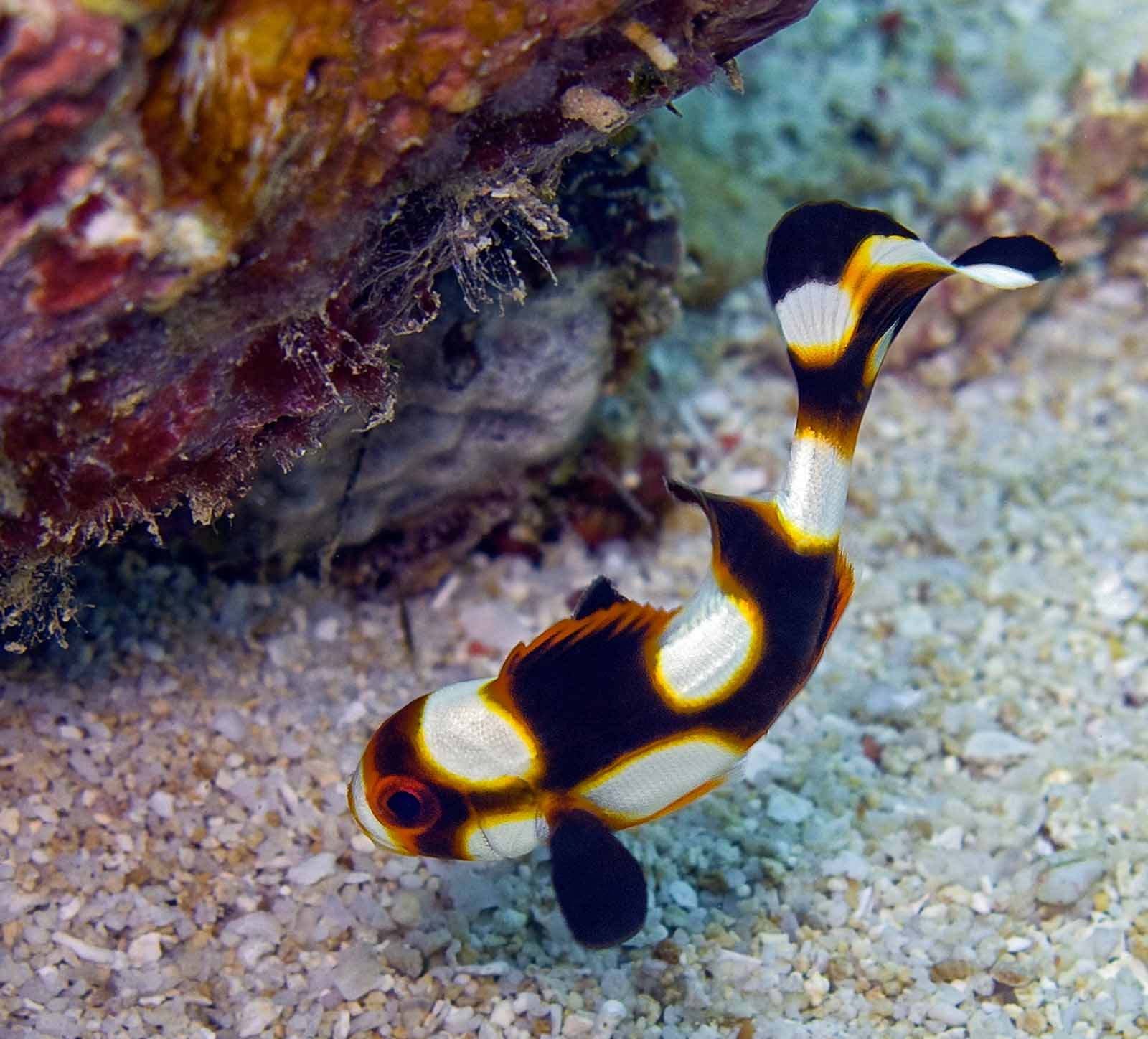
oriental sweetlips Madang Ples Bilong Mi
Plectorhinchus Vittatus is a peaceful fish. Indian Ocean Oriental Sweetlips can grow up to 80 cm what is approximately 31 inches. 1 specimen basically needs at least 9600cm 2 of water surface which is approximately 1488 square inch. This species will require to be kept in a tank that is very large. ( e) Medium aquariums have at least 113 Litres.